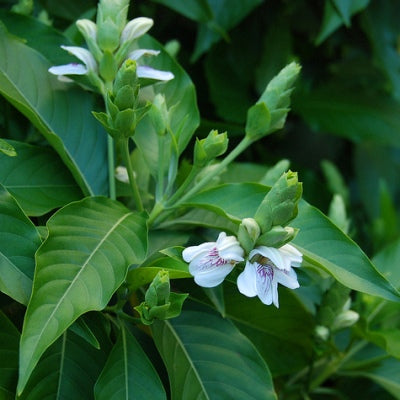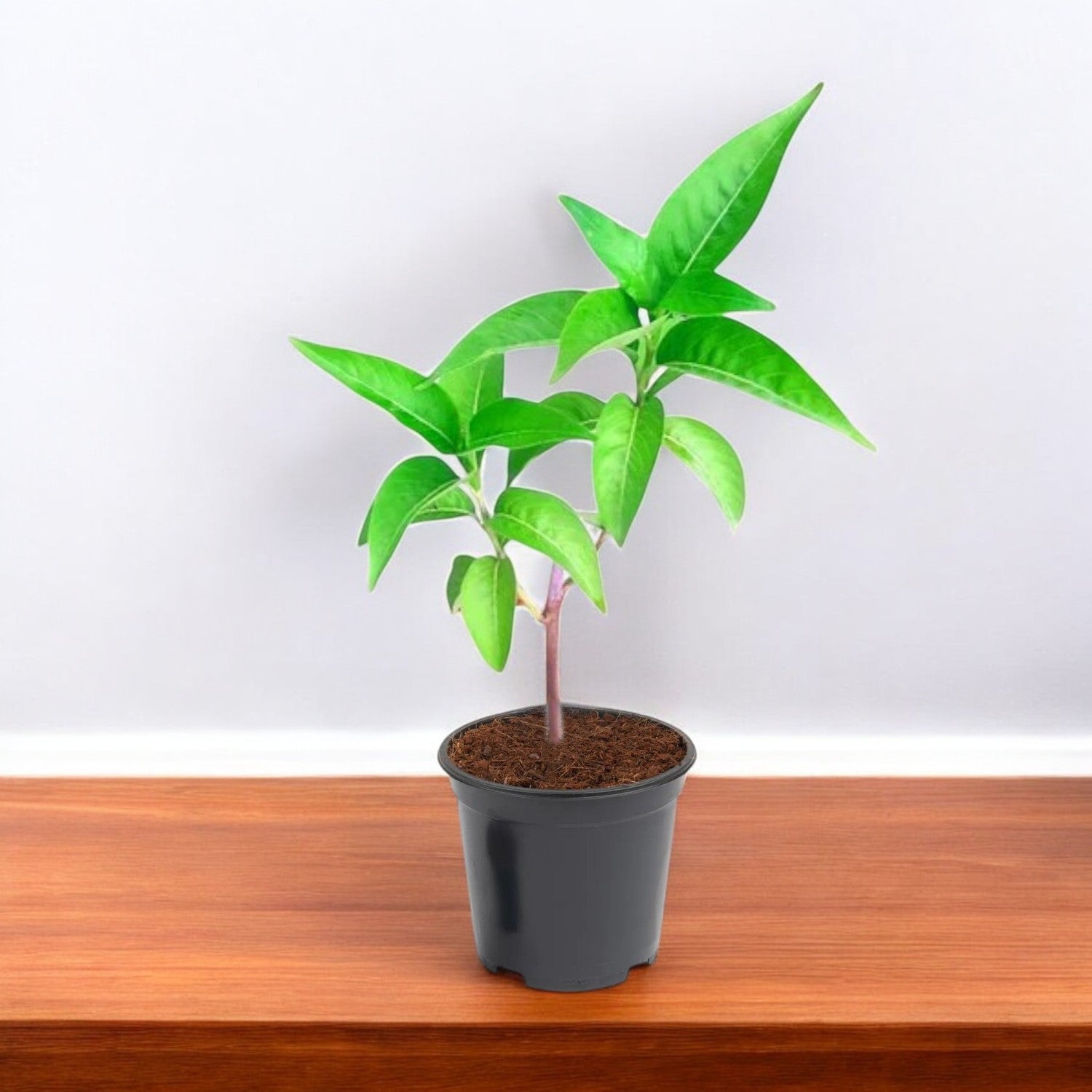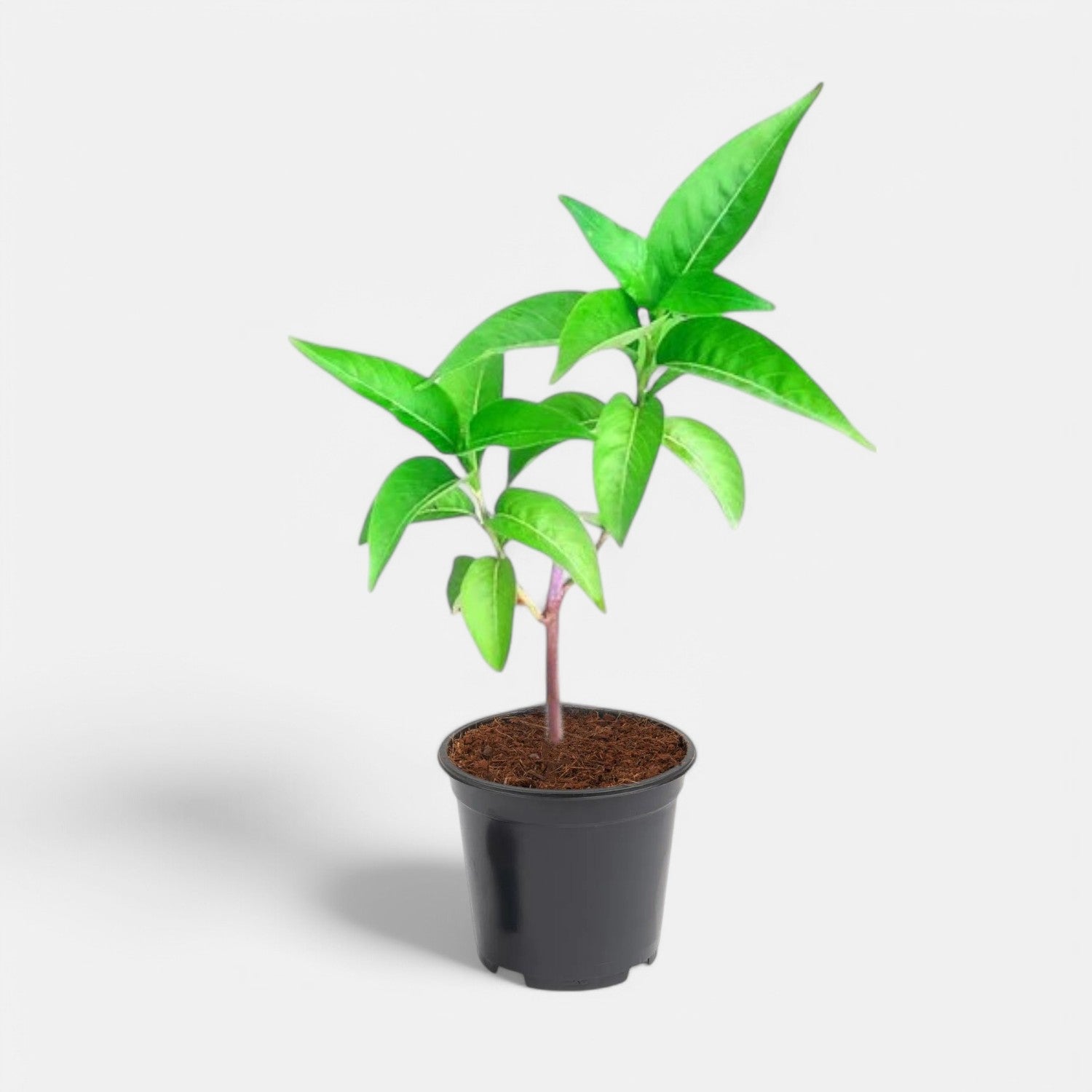


Brief Intro
Adulsa Plant (Vasa, Vasaka, Malabar Nut)
Basic Product Details
- Scientific Name: Justicia adhatoda
- Common Names: Adulsa, Vasa, Vasaka, Malabar Nut, Adusa, Arusha Plant
- Plant Height: 12-24 inches (approximately)
- Pot Size: 4-5 inch nursery pot
- Plant Type: Perennial, Medicinal, Evergreen Shrub
- Soil Type: Well-draining, loamy, slightly acidic to neutral soil
- Sunlight Requirement: Full sunlight to partial shade
Product Overview
The Adulsa Plant (Vasa, Vasaka, Malabar Nut) is a well-known medicinal herb used in Ayurveda, Siddha, and Unani medicine for centuries. It is famous for its powerful respiratory and anti-inflammatory properties, making it a natural remedy for cough, asthma, bronchitis, and other respiratory ailments. The plant produces lush green leaves that are rich in alkaloids, particularly vasicine, which helps in clearing mucus and improving lung function.
Adulsa is easy to grow and thrives in tropical and subtropical climates. Its antibacterial and antioxidant properties also make it beneficial for skin health, wound healing, and overall immunity.
Features and Characteristics
Growth Habit
- A bushy evergreen shrub that grows up to 4-6 feet tall.
- Low maintenance and suitable for both gardens and containers.
Leaves & Flowers
- Dark green, elongated leaves with a glossy texture.
- Produces white or pale purple tubular flowers with medicinal properties.
Medicinal Properties
- Expectorant: Clears mucus and helps in treating cough.
- Bronchodilator: Opens up airways, beneficial for asthma patients.
- Antimicrobial: Fights infections and enhances immunity.
- Anti-inflammatory: Reduces swelling and irritation in the respiratory tract.
Uses of Adulsa Plant
Traditional & Ayurvedic Uses
- Used in Ayurvedic syrups and herbal decoctions for respiratory health.
- Helps treat bronchitis, cold, flu, and sore throat.
- Leaves are boiled in water and used as a herbal tea for cough relief.
Culinary & Herbal Uses
- Dried leaves are used in herbal teas and tonics.
- Sometimes used in homemade herbal formulations for immunity boosting.
Other Benefits
- Helps detoxify the blood and improve skin health.
- Used in folk medicine for wound healing and joint pain relief.
How to Grow & Care for Adulsa
Climate Requirements
- Prefers warm, humid, tropical, and subtropical climates.
- Can tolerate mild winters but needs protection from frost.
Soil
- Grows best in well-draining, sandy-loamy soil with rich organic content.
- Avoid waterlogged or heavy clay soil.
Watering
- Water 2-3 times a week, keeping the soil moist but not soggy.
- Reduce watering during winters.
Fertilizer
- Apply organic compost or cow dung manure every month.
- Use mild nitrogen-based fertilizer to promote leafy growth.
Pruning
- Regular pruning encourages bushy growth and better leaf production.
- Remove dry and damaged leaves to maintain plant health.
Pest & Disease Control
- May be affected by aphids, mealybugs, or fungal infections.
- Use neem oil spray or mild organic pesticides for protection.
Benefits of Growing Adulsa
Health & Wellness Benefits
- Improves respiratory health and relieves congestion.
- Supports immune function and overall wellness.
Economic Benefits
- High-demand medicinal plant used in herbal industries.
- Easy to grow and low maintenance for commercial cultivation.
Environmental Benefits
- Enhances biodiversity by attracting beneficial insects.
- Acts as a natural air purifier in home gardens.
Placement Suggestions
- Ideal for medicinal gardens, balconies, and home herbal corners.
- Suitable for potted plants (8-12 inches wide) in semi-shaded areas.
- Can be planted in hedges or alongside other herbal plants.
Common Questions and Answers About Adulsa
Where can I buy Adulsa plant?
You can buy Adulsa plant from our online store plantsguru or a local nursery near you. At Plantsguru, we offer healthy, potted Adulsa (Vasaka) plants.
How long does it take for the Adulsa plant to grow?
Adulsa grows quickly and reaches maturity within 6-12 months under good care.
Can Adulsa be grown in pots?
Yes, it thrives well in medium to large-sized pots (8-12 inches) with proper drainage.
How often should I water the plant?
Water 2-3 times a week, ensuring the soil remains moist but not waterlogged.
Does Adulsa require full sunlight?
Yes, it prefers full sunlight to partial shade for optimal growth.
How can I use Adulsa leaves for cough?
Boil fresh leaves in water and drink as herbal tea or mix the extract with honey.
Is Adulsa safe for children?
Yes, but it should be used in moderation and under medical guidance.
How do I prevent pests on my Adulsa plant?
Use neem oil spray or organic pesticides to protect against common pests.
What is the best fertilizer for Adulsa?
Use organic compost, vermicompost, or mild nitrogen-based fertilizers.
Can I grow Adulsa indoors?
It is best grown outdoors in full sunlight but can be kept in a bright, ventilated indoor space.
The Adulsa Plant (Vasa, Vasaka, Malabar Nut) is a powerful herbal remedy for respiratory health and an excellent addition to home gardens. Order now and enjoy the benefits of natural healing with this Ayurvedic wonder plant!
Note: It is strongly recommended to consult with a qualified healthcare professional before consuming Adulsa Plant.
FAQs:
What is the Return Policy?
This product is Not Returnable. It may be replaced or refunded in case of damage or defective condition on a case to case basis.
How to cancel my order?
Cancellation for Live Plants is allowed before the dispatched. You can request cancellation through Your Orders page or by contacting customer service within that time.
What if i received damage product?
If a product is received in a damaged or defective condition, you need to contact the customer service within 1 days of delivery. Free of cost replacement or refund claim is available to you.




